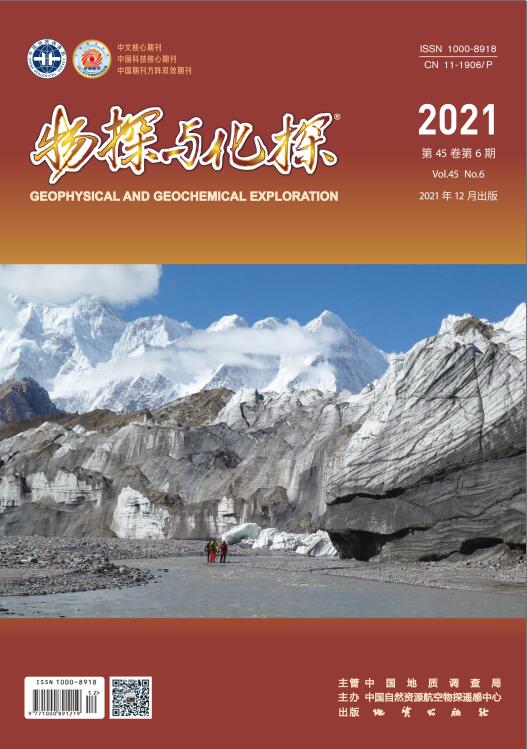| [1] |
曾华霖. 重力场与重力勘探[M]. 北京: 地质出版社, 2005.
Google Scholar
|
| [2] |
Zeng H L. Gravity field and gravity prospecting [M]. Beijing: Geological Publishing Press, 2005.
Google Scholar
|
| [3] |
Fedi M, Pilkington M. Understanding imaging methods for potential field data[J]. Geophysics, 2012, 77(1):G13-G24.
Google Scholar
|
| [4] |
栾文贵. 位场解析延拓的稳定化算法[J]. 地球物理学报, 1983, 26(3):263-274.
Google Scholar
|
| [5] |
Luan W G. The stablized algorithm of the analytic continuation for the potential field[J]. Acta Geophysica Sinica, 1983, 26(3):263-274.
Google Scholar
|
| [6] |
Berezkin V M. Method of the total gradient in geophysical prospecting[M]. Moscow: Nedra, 1988 (in Russian).
Google Scholar
|
| [7] |
梁锦文. 位场向下延拓的正则化方法[J]. 地球物理学报, 1989, 32(5):600-608.
Google Scholar
|
| [8] |
Liang J W. Downward continuation of regularization methods for potential fields[J]. Acta Geophysica Sinica, 1989, 32(5):600-608.
Google Scholar
|
| [9] |
王邦华, 王理. 重磁位场的正则化向下延拓[J]. 物探化探计算技术, 1998, 20(2):30-35.
Google Scholar
|
| [10] |
Wang B H, Wang L. A new normalized method of downward extrapolation for potential field[J]. Computing Techniques for Geophysical and Geochemical Exploration, 1998, 20(1):30-35.
Google Scholar
|
| [11] |
Fedi M, Florio G. A stable downward continuation by using the ISVD method[J]. Geophysical Journal International, 2002, 151:146-156.
Google Scholar
|
| [12] |
Cooper G. The stable downward continuation of potential field data[J]. Exploration Geophysics, 2004, 35, 260-265.
Google Scholar
|
| [13] |
徐世浙. 位场延拓的积分—迭代法[J]. 地球物理学报, 2006, 49(4):1176-1182.
Google Scholar
|
| [14] |
Xu S Z. The integral iteration method for continuation of potential fields[J]. Chinese Journal of Geophysics, 2006, 49(4):1176-1182.
Google Scholar
|
| [15] |
曾小牛, 李夕海, 韩绍卿, 等. 位场向下延拓三种迭代方法之比较[J]. 地球物理学进展, 2011, 26(3):908-915.
Google Scholar
|
| [16] |
Zeng X N, Li X B, Han S Q, et al. A comparison of three iteration methods for downward continuation of potential fields[J]. Progress in Geophysics, 2011, 26(3):908-915.
Google Scholar
|
| [17] |
Zeng X N, Li X H, Su J, et al. An adaptive iterative method for downward continuation of potential-field data from a horizontal plane[J]. Gephysics, 2013, 78(4):J43-J52.
Google Scholar
|
| [18] |
刘晓刚, 王兴涛, 李迎春, 等. 重力与磁力测量数据向下延拓中最优正则化参数确定方法研究[J]. 测绘学报, 2014, 43(9):881-887.
Google Scholar
|
| [19] |
Liu X G, Wang X T, Li Y C, et al. Optimal regularization parameter determination method in downward continuation of gravimetric and geomagnetic data[J]. Acta Geodaetica et Cartographica Sinica, 2014, 43(9):881-887.
Google Scholar
|
| [20] |
李晓杰, 王真理. 正则化等效层重力向下延拓方法[J]. 地球物理学报, 2018, 61(7):3038-3036.
Google Scholar
|
| [21] |
Li X J, Wang Z L. A study on gravity field downward continuation using the regularized equivalent-layer method[J]. Chinese Journal of Geophysics, 2018, 61(7):3038-3036.
Google Scholar
|
| [22] |
Naidu P. Spectrum of the potential field due to randomly distributed sources[J]. Geophysics, 1968, 33:337-345.
Google Scholar
|
| [23] |
Pawlowski R S. Green's equivalent-layer concept in gravity band-pass filter design[J]. Geophysics, 1994, 59:69-76.
Google Scholar
|
| [24] |
Quarta T, Fedi M, Santis A. Source ambiguity from an estimation of the scaling exponent of potential field power spectra[J]. Geophys. J. Int., 2000, 140:311-323.
Google Scholar
|
| [25] |
王纯, 张研, 文百红. 改进的重力场向下延拓计算方法[J]. 大庆石油地质与开发, 2018, 37(1):147-153.
Google Scholar
|
| [26] |
Wang C, Zhang Y, Wen B H. The improved calculating method of downward continuation for gravity potential field[J]. Petroleum Geology and Oilfield Development in Daqing, 2018, 37(1):147-153.
Google Scholar
|
| [27] |
文百红, 杨辉, 张连群, 等. 重磁优化下延成像深部物性结构预测[C]// 中国地球科学联合学术年会 2020:6048-6051.
Google Scholar
|
| [28] |
Wen B H, Yang H, Zhang L Q. Deep physical structure prediction by gravity and magnetic optimized downward continuation imaging[C]// Collection of Chinese earth science integrated symposium: 6048-6051.
Google Scholar
|
| [29] |
程方道, 黄国强. 重磁位场波谱理论及其应用[M]. 长沙: 中南工业大学出版社, 1987.
Google Scholar
|
| [30] |
Cheng F D, Huang G Q. Spectral theory and its application of gravity and magnetic potential fields [M]. Changsha: Publishing Press of Central South University of Technology, 1987.
Google Scholar
|
| [31] |
文百红, 程方道. 用于划分磁异常的新方法——插值切割法[J]. 中南矿冶学院学报, 1990, 21(3):229-235.
Google Scholar
|
| [32] |
Wen B H, Cheng F D. A new interpolating cut method for identifying regional and local fields of magnetic anomaly[J]. Journal of Central South Mining and Metallurgy, 1990, 21(3):229-235.
Google Scholar
|
| [33] |
赵文举, 赵荔, 杨战军, 等. 插值切割位场分离方法改进及其在资料处理中的应用[J]. 物探与化探, 2020, 44(4):886-893.
Google Scholar
|
| [34] |
Zhao W J, Zhao L, Yang Z J, et al. The improvement of the interpolation cutting potential field separation method and its application to data processing[J]. Geophysical and Geochemical Exploration, 2020, 44(4):886-893.
Google Scholar
|






 DownLoad:
DownLoad: